Multi-tiered aviary structures and bird development
Pullet rearing: Preparing laying hens for a cage-free environment

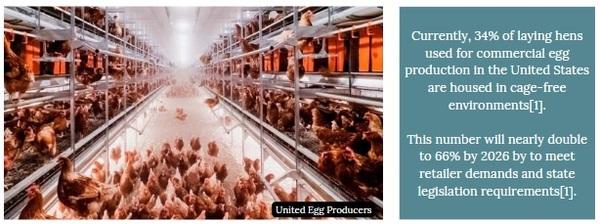
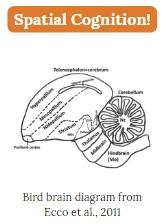
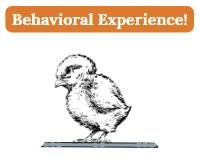
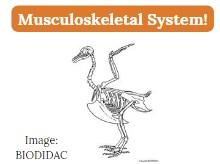
- Reduced use of elevated structures[7,8,9]
- More collisions with elevated structures[9]
- Less developed musculoskeletal system[6,10,11]
- Higher prevalence of keel bone fractures[8,12]
- Higher risk of cloacal cannibalism[13]
- Higher risk of floor eggs (i.e., eggs laid outside of the nest)[14]
- More fearfulness[7]
- Worse performance on a spatial memory task[15]
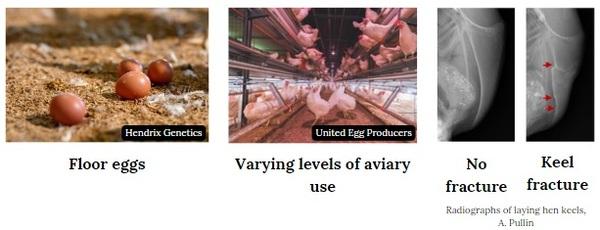
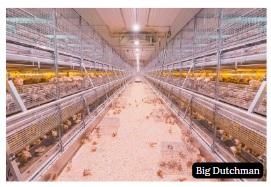
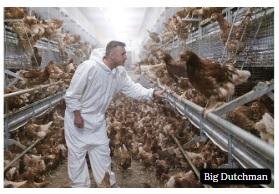
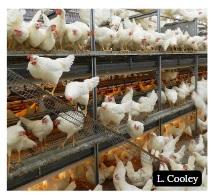
- During pullet rearing (the first 16 to 18 weeks of life), birds are sensitive to cognitive, behavioral, and musculoskeletal development that affects how they use elevated structures (i.e., spatial abilities).
- When pullets are not provided with elevated space early in life, but then expected to move up and down from structures as adults, negative consequences are reported for behavior, injuries, and egg laying.
- These consequences can be avoided, or at least mitigated, with rearing environments that match the laying environment, training laying hens after they are transferred, and modifying the design of the layer environment.
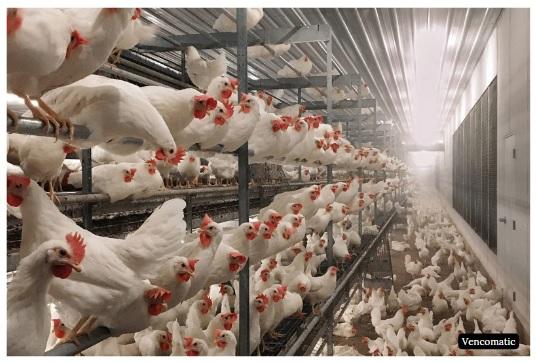
United Egg Producers. 2023. Facts & stats: Housing environments of U.S. laying hens. <https://unitedegg.com/facts-stats/>. Accessed Sept 22, 2023.
Over, R. A. Y., and D. Moore. 1981. Spatial acuity of the chicken. Brain Res. 211:424–426.
Schmid, K. L., and C. F. Wildsoet. 1998. Assessment of visual acuity and contrast sensitivity in the chick using an optokinetic nystagmus paradigm. Vision Res. 38:2629–2634.
Freire, R., H. W. Cheng, and C. J. Nicol. 2004. Development of spatial memory in occlusion-experienced domestic chicks. Anim. Behav. 67:141–150.
Habinski, A. M., L. J. Caston, M. E. Hunniford, and T. M. Widowski. 2017. Development of perching behavior in 3 strains of pullets reared in furnished cages. Poult. Sci. 96:519–529.
Casey-Trott, T. M., D. R. Korver, M. T. Guerin, V. Sandilands, S. Torrey, and T. M. Widowski. 2017. Opportunities for exercise during pullet rearing, Part I: Effect on the musculoskeletal characteristics of pullets. Poult. Sci. 96:2509–2517.
Brantsæter, M., J. Nordgreen, T. B. Rodenburg, F. M. Tahamtani, A. Popova, and A. M. Janczak. 2016. Exposure to increased environmental complexity during rearing reduces fearfulness and increases use of three-dimensional space in laying hens (Gallus gallus domesticus). Front. Vet. Sci. 3:14.
Norman, K. I., C. A. Weeks, J. F. Tarlton, and C. J. Nicol. 2021. Rearing experience with ramps improves specific learning and behaviour and welfare on a commercial laying farm. Sci. Rep. 11:8860.
Pullin, A. N., S. M. Temple, D. C. Bennett, C. B. Rufener, R. A. Blatchford, and M. M. Makagon. 2020. Pullet rearing affects collisions and perch use in enriched colony cage layer housing. Animals 10:1269.
Regmi, P., T. S. Deland, J. P. Steibel, C. I. Robison, R. C. Haut, M. W. Orth, and D. M. Karcher. 2015. Effect of rearing environment on bone growth of pullets. Poult. Sci. 94:502–511.
Hester, P. Y. 2014. The effect of perches installed in cages on laying hens. Worlds. Poult. Sci. J. 70:247–264.
Casey-Trott, T. M., M. T. Guerin, V. Sandilands, S. Torrey, and T. M. Widowski. 2017. Rearing system affects prevalence of keel-bone damage in laying hens: A longitudinal study of four consecutive flocks. Poult. Sci. 96:2029–2039.
Gunnarsson, S., L. J. Keeling, and J. Svedberg. 1999. Effect of rearing factors on the prevalence of floor eggs, cloacal cannibalism and feather pecking in commercial flocks of loose housed laying hens. Br. Poult. Sci. 40:12–18.
Tauson, R. 2005. Management and housing systems for layers: Effects on welfare and production. Proc. Nutr. Soc. 61:477–490.
Tahamtani, F. M., J. Nordgreen, R. E. Nordquist, and A. M. Janczak. 2015. Early life in a barren environment adversely affects spatial cognition in laying hens (Gallus gallus domesticus). Front. Vet. Sci. 2:3.












